How would you ask for something that’s right within your reach?
Would you say “Could you pass me the pen that is sitting right here next to my hand” or simply “Could you pass me this?”
The answer is obvious… you’d choose the shorter, more natural option.
The simple word “this” is instantly communicating both location and your specific request without any confusion.
And this is exactly what we’re covering in this blog.
We’ll walk you through everything you need to know about demonstrative pronouns.
What are demonstrative pronouns, how they function, and when to use this, that, these, and those with confidence. You’ll also see clear examples that show how each one works in real-life sentences.
Let’s get started.
Key Takeaways
- The four demonstrative pronouns are this, that, these, and those, where “this” and “these” indicate nearness while “that” and “those” show distance.
- Demonstrative pronouns stand alone and replace nouns entirely, while demonstrative adjectives modify nouns that follow them.
- Demonstrative pronouns work differently across formal writing, casual conversation, and digital communication. In professional settings, use them to reference specific ideas clearly, while in casual speech they often pair with gestures or emotional tone.
- Common errors include unclear antecedents, distance confusion, subject-verb disagreement with plural demonstratives, and overuse that weakens writing style.
Demonstrative Pronouns Definition in English Grammar
What is a demonstrative pronoun exactly? Demonstrative pronouns are words used to point to specific people or things based on distance and number.
The four demonstrative pronouns are: this, that, these, and those.
The primary function of demonstrative pronouns is to replace nouns while also indicating proximity.
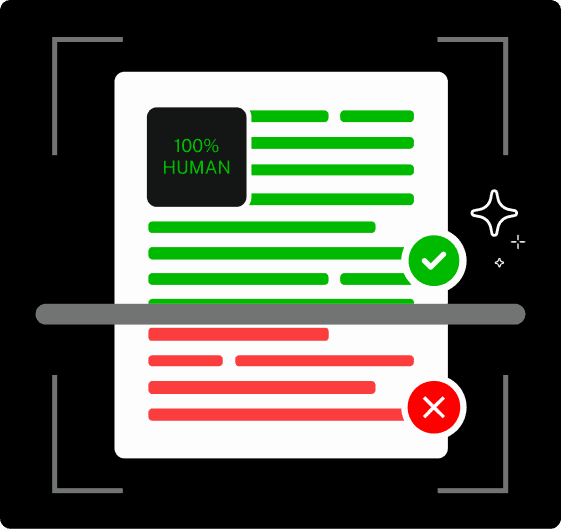
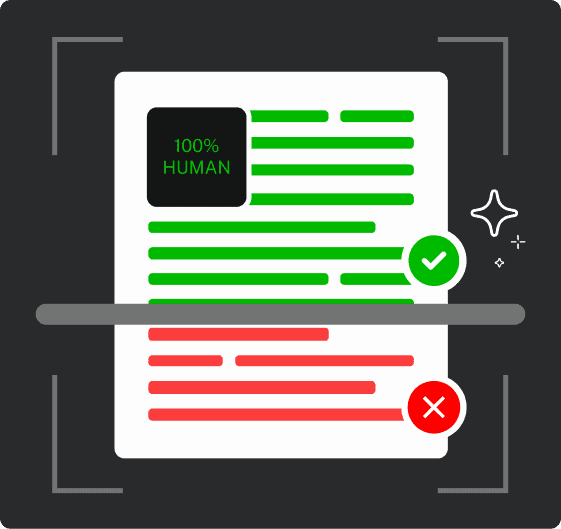
Never Worry About AI Detecting Your Texts Again. Undetectable AI Can Help You:
- Make your AI assisted writing appear human-like.
- Bypass all major AI detection tools with just one click.
- Use AI safely and confidently in school and work.
For example:
- This is broken.
→ “This” replaces the name of the item and shows it’s close.
- That was unexpected.
→ “That” replaces something mentioned earlier and shows distance.
Unlike adjectives, demonstrative pronouns stand alone. They act as the subject or object in a sentence, not as modifiers. Example:
- Those were amazing. (Those = subject)
- These are heavy. (These = subject)
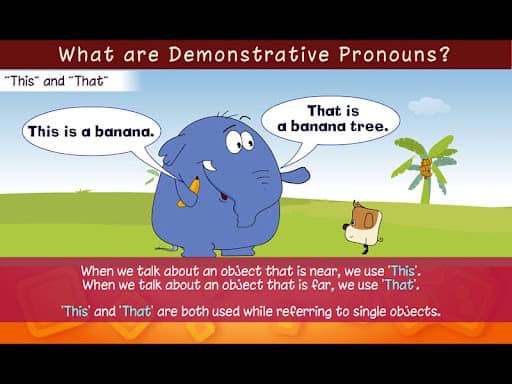
Knowing what is demonstrative pronoun use helps you create clear, and concise speech (especially in everyday speech and informal writing), because they prevent repetition and improve sentence flow.
List of Demonstrative Pronouns
English has four core demonstrative pronouns.
Each one signals two things: how many (singular or plural) and how far (near or far).
The Core Four of Demonstrative Pronouns
| Pronoun | Number | Proximity |
| This | Singular | Near |
| That | Singular | Far |
| These | Plural | Near |
| Those | Plural | Far |
Here’s how they work:
- Singular vs Plural
- Use this and that for one item/person.
- Use these and those for more than one.
- Near vs Far
- “Near” means physically close or something just mentioned.
- “Far” refers to physical distance, time in the past/future, or less immediate relevance.
Examples:
- This is my phone. (One item, nearby)
- That was his idea. (One item, farther away or earlier in time)
- These are clean clothes. (Multiple items, close by)
- Those were difficult days. (Multiple items, far in time)
Here’s the memory tip: T-words show proximity:
- This/These = Touchable
- That/Those = There (further away)
“Such” is also occasionally used with demonstratives, as in “Such is life.” Use with caution. It’s more formal or archaic and doesn’t replace a noun directly like the core four.
How to Use Demonstrative Pronouns in Sentences
If you’re still wondering, what’s a demonstrative pronoun, this section will make it practical:
The correct usage of demonstrative pronouns depends on sentence position, contextual logic, and clarity of reference.
- Typical Sentence Structure
A demonstrative pronoun is usually followed by a linking verb (is, was, are, were), an action verb (means, looks, costs), or a noun complement. Examples:
- This is urgent.
- Those were chosen carefully.
- That helps a lot.
Demonstrative pronoun acts as a subject or object, not as a modifier (which would make it a demonstrative adjective).
2. Proximity Logic
Proximity can be:
- Physical: “This chair” (right here), “Those bags” (across the room)
- Temporal: “These days” (now), “That day” (in the past)
- Conversational: Referencing a recent or distant idea in dialogue
3. Sentence Position and Function
Demonstrative pronouns can function as:
- Subjects: This is broken.
- Objects: I didn’t expect that.
Complements: The issue was this.
They are never used with a noun, that’s when they become adjectives (this book, those people).
4. Avoiding Redundancy
One of the most practical uses of demonstrative pronouns is to avoid repetition. Instead of repeating a noun:
- Incorrect: The design was flawed. The design caused confusion.
- Correct: The design was flawed. That caused confusion.
This keeps writing tight, clear, and less robotic, especially useful in spoken English or informal writing.
5. Contextual Usage Examples
This (singular, near):
- This is what I meant. (clarifying a current point)
- This feels different. (emotional context)
- This shows how bias skews data. (academic)
That (singular, far/earlier):
- That was unnecessary. (referring to a past comment)
- I didn’t expect that. (reaction to a prior event)
- That remains the biggest challenge. (formal tone)
These (plural, near):
- These are my notes. (immediate possession)
- These help me stay organized. (practical usage)
- These represent core metrics. (professional tone)
Those (plural, distant):
- Those were just excuses. (referring to earlier statements)
- I’ll never forget those days. (storytelling tone)
- Those highlight the flaws in the model. (technical context)
6. Formal vs Informal Register
- Formal: These findings align with the hypothesis.
- Informal: This is wild!
- Narrative: That moment changed everything.
If you want to catch wrong demonstrative pronouns usage, unclear antecedents, and ambiguous pronoun references, use Grammar Checker.
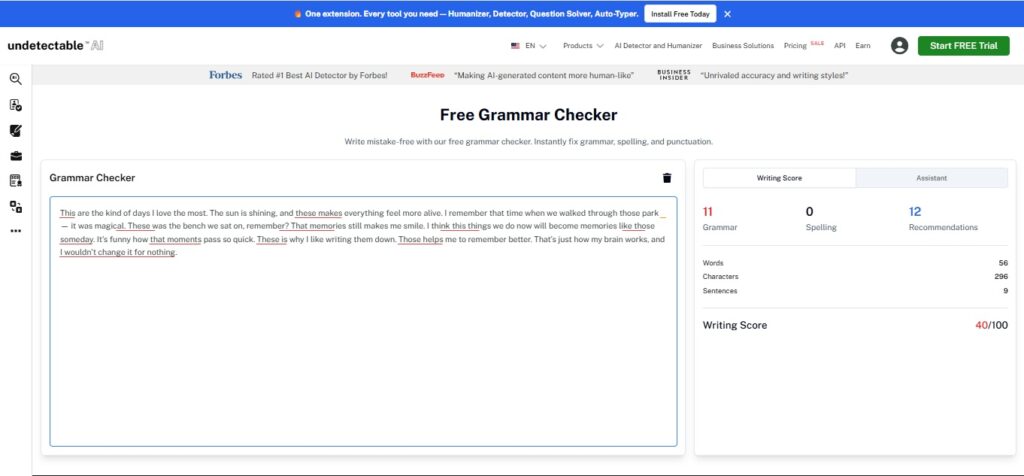
This tool helps you in making your writing flow naturally and avoids robotic or repetitive phrasing.
Demonstrative Pronouns vs Demonstrative Adjectives
- What’s the Difference?
Here are the key differences between demonstrative pronouns and demonstrative adjectives
| Aspect | Demonstrative Pronoun | Demonstrative Adjective |
| Definition | Replaces a noun entirely | Modifies a noun directly after it |
| Followed by nouns? | No | Yes |
| Stands alone? | Yes | No |
| Example | This is cold | This soup is cold |
| Grammatical role | Subject or object | Adjective (modifier of noun) |
Key Hint: If a noun comes immediately after the demonstrative, it’s an adjective.
- Visual Sentence Comparisons
| Sentence | Demonstrative | Role | Number | Proximity | Context |
| This is spicy | This | Pronoun | Singular | Near | Restaurant |
| This curry is spicy | This | Adjective | Singular | Near | Restaurant |
| Those were loud | Those | Pronoun | Plural | Far | Office meeting |
| Those comments were loud | Those | Adjective | Plural | Far | Office meeting |
| This is not mine | That | Pronoun | Singular | Far | Email thread |
| This email is not mine | That | Adjective | Singular | Far | Email thread |
Usage in:
- Questions:
- What is this? → Pronoun
- What is this document? → Adjective
- Statements:
- These are new. → Pronoun
- These shoes are new. → Adjective
- Commands:
- Take that. → Pronoun
- Take that folder. → Adjective
- How to Avoid Confusing the Two
Here is the identification strategy:
- Check what comes next
- Noun follows → Adjective
- No noun → Pronoun
- Substitution Test
- Replace with it or they
- This is good → It is good ✅ → Pronoun
- This product is good → It product is good ❌ → Adjective
- Replace with it or they
- Context Clues
- is, are, was, were → usually follow pronouns
- Nouns like idea, plan, soup → signal adjectives
- Common Confusion Patterns
- Repeating nouns after pronouns
- Leaving demonstrative adjectives without nouns
Ask Yourself:
- Does a noun follow the word?
→ Yes = Adjective
→ No = Pronoun - Is it replacing something or describing something?
→ Replacing = Pronoun
→ Describing = Adjective
Demonstrative Pronouns in Different Contexts
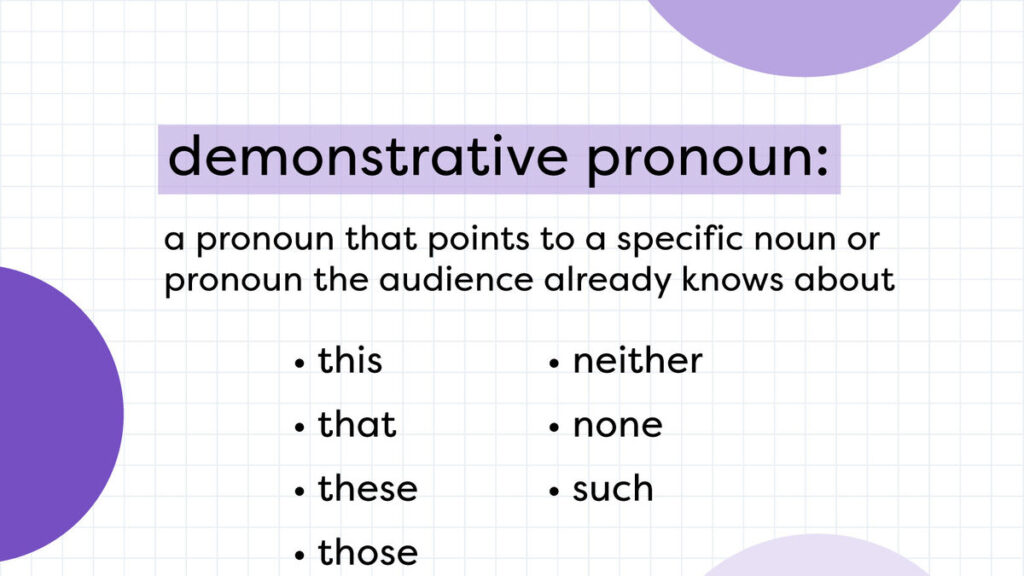
Below is a breakdown of how demonstrative pronouns function in different settings and how to use them effectively.
- Formal Writing (Academic, Business, Professional)
In professional and academic settings, use demonstratives to reference ideas, evidence, or previously mentioned arguments but always follow with clarity.
Examples:
- This supports the theory of cognitive dissonance.
- That suggests a flaw in the prior analysis.
Avoid vague usage like “This is problematic” unless the referenced subject is unmistakably clear from the previous sentence.
- Casual Conversation
In everyday speech, demonstratives often pair with gestures or emotional tone. Examples:
- This is wild! (refers to something just experienced or said)
- That was crazy! (emotionally or temporally distant)
- These are amazing! (plural, immediate context)
- Regional Variations: British vs American Usage
British English is more flexible with demonstratives, sometimes using “that” where American English prefers “this.”
- UK: That’s lovely, isn’t it? (even for nearby items)
- US: This looks great! (for something physically or contextually near)
- Digital Communication (Text, Email, Social Media)
In digital settings, demonstratives can easily come across as vague or overly blunt. Examples:
- This is hilarious (commonly used in response to media/memes)
- That is unacceptable. (formal, but can feel harsh in email or Slack)
- These(often paired with links, lists, or screenshots)
- Cultural and Cross-Context Clarity
In multicultural or multilingual settings, demonstratives should never stand alone.
- Incorrect: That’s wrong.
- Correct: That conclusion is flawed due to missing data.
Here’s how you can avoid using vague demonstratives.
If your sentence begins with this, that, these, or those, ask:
- Does a clear noun or idea follow?
- Can the reader easily tell what it refers to?
- Would replacing it with “it” or “they” make sense?
Examples:
- Incorrect: This is unclear. (What is “this”?)
- Correct: This section of the report lacks clarity.
Even after answering the three questions, if your content still feels vague or fails to connect with your audience, try using an AI Humanizer.
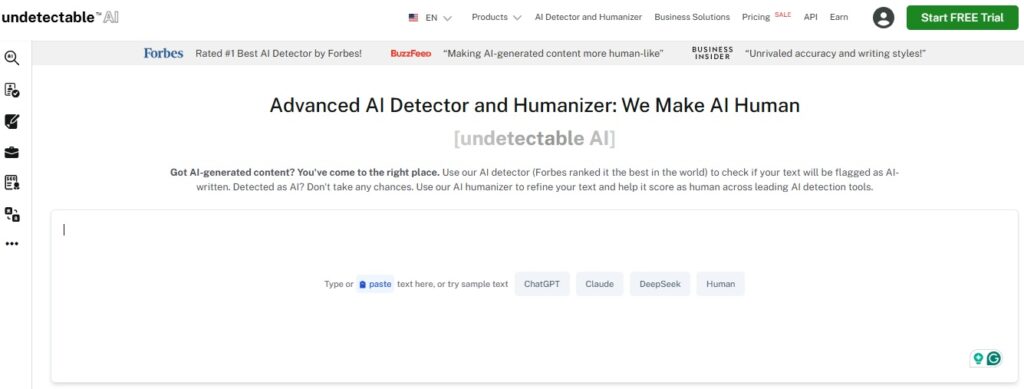
This tool rewrites your text in a way that closely resembles natural, human writing.
Common Mistakes and How to Fix Them
Using demonstrative pronouns incorrectly can make your writing vague, repetitive, or grammatically off.
Here’s how to spot and fix the most common errors:
- Unclear Antecedents
Using a demonstrative without specifying what it’s referring to makes the sentence vague.
- Incorrect: This is confusing.
- Correct: This explanation is confusing.
Clarify what “this” points to by naming the noun.
- Distance Confusion
Mixing up “this/these” (near) with “that/those” (far) creates logical inconsistency.
- Incorrect: This mountain over there is tall.
- Correct: That mountain over there is tall.
Use “that/those” for objects farther away in space or time.
- Overuse Patterns
Repeating demonstratives in every sentence weakens style and clarity.
- Incorrect: This is great. This is helpful. This is clear.
- Correct: This is great—helpful and clear as well.
Combine ideas or rephrase it to reduce redundancy.
- Agreement Errors
Using plural demonstratives (“these/those”) with singular verbs or nouns causes subject-verb mismatch.
- Incorrect: These is the problem.
- Correct: These are the problem.
Match plural demonstratives with plural verbs/nouns.
- Redundancy
Repeating demonstratives unintentionally confuses meaning.
- Incorrect: This this book is mine.
- Correct: This book is mine.
Edit out accidental duplication during proofreading.
- Wrong Number Reference
Using “those” with a singular noun creates a number mismatch.
- Incorrect: Those chair is broken.
- Correct: That chair is broken.
Make sure the demonstrative matches the noun in number.
Try out our AI Detector and Humanizer in the widget below!
Final Thoughts
So what is a demonstrative pronoun? It’s a small grammar tool used for clear communication.
Are you still unsure about how to use demonstrative pronouns?
Ask yourself: is the object near or far? Singular or plural? That’s your answer.
Demonstrative pronouns aren’t complicated. But they do need clarity.
We’ve broken it all down in this blog from definitions and examples to practical usage tips and common slip-ups.
So now, it’s about applying it. Next time you write “this,” “that,” “these,” or “those,”
Ask: is it clear what I’m pointing to? Will the reader know exactly what I mean?
If the answer’s yes, you’re on the right track. If not, revise. That extra second of thought will make your writing precise.
Need help polishing your grammar? Use Undetectable AI’s tools for instant clarity and accuracy.
